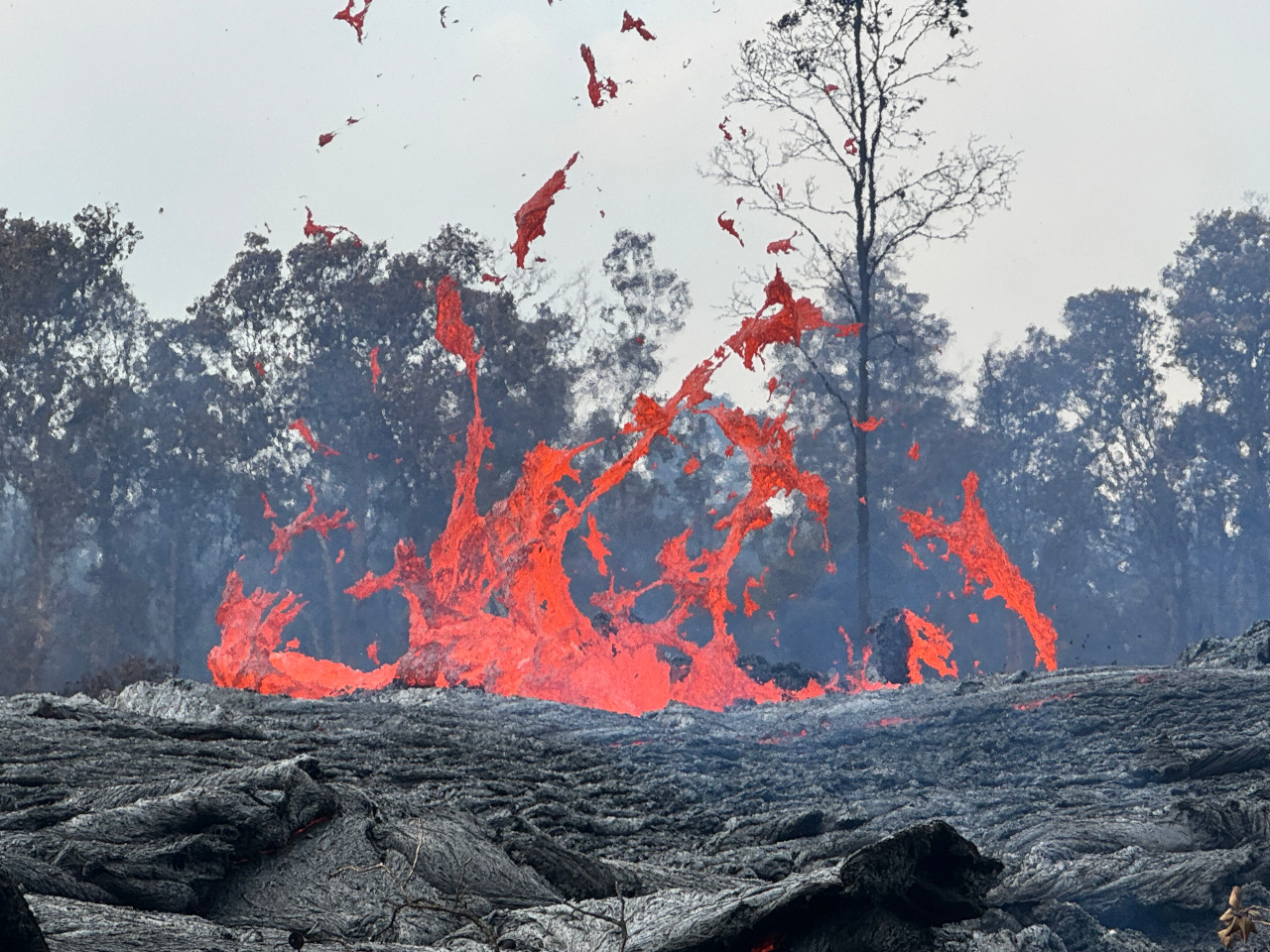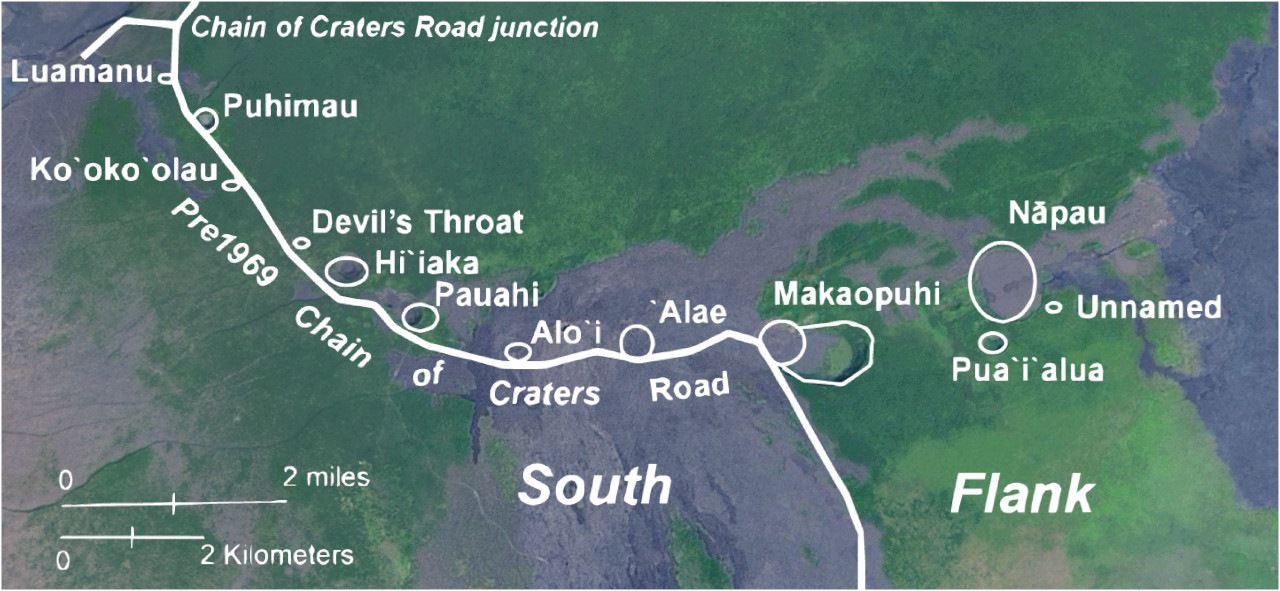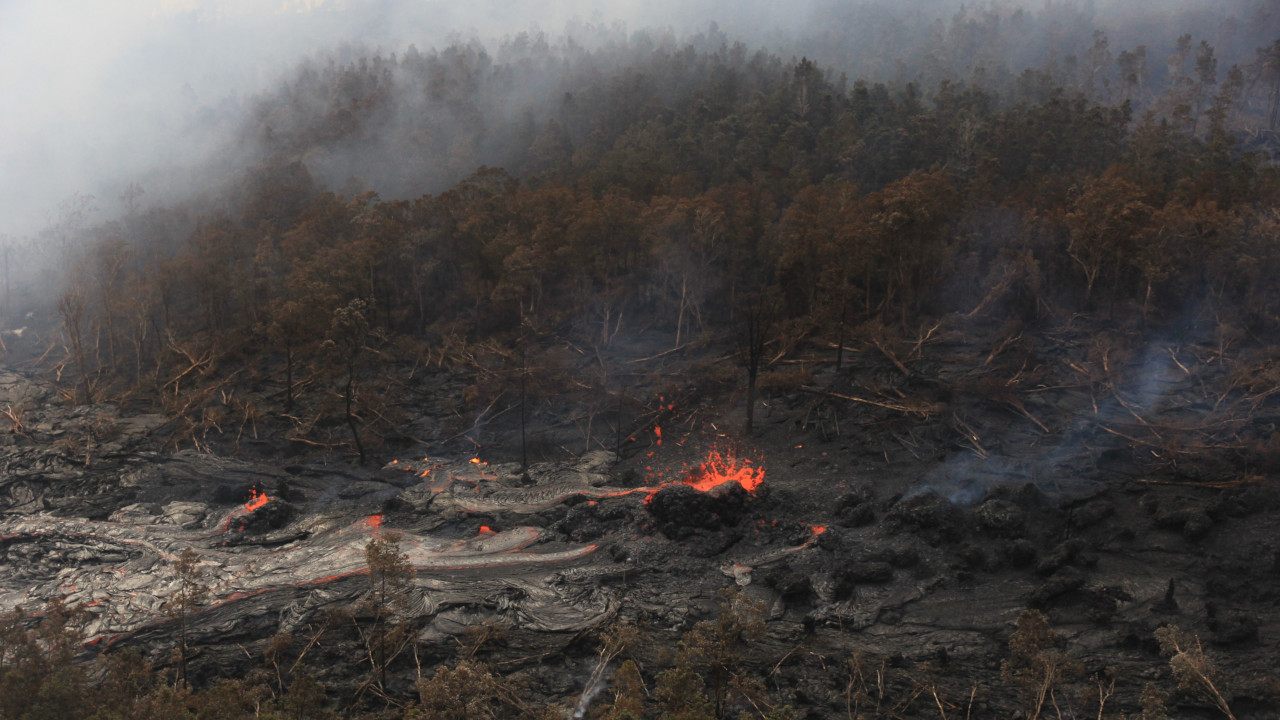
USGS: “USGS Hawaiian Volcano Observatory field crews reported small fountains and lava flows erupting from one of the western fissures just before 9 a.m. HST on September 20, 2024.” (USGS photo by M. Patrick)
(BIVN) – Kīlauea is not erupting, and the USGS Alert level for the Hawaiʻi island volcano remains at ADVISORY.
The USGS Hawaiian Volcano Observatory says ground deformation has greatly decreased since the most recent eruption near Nāpau Crater. However, data show that magma is continuing to move at a low rate from the summit to the middle East Rift Zone (ERZ).
In this week’s Volcano Watch article, USGS HVO scientists and affiliates write about the potential long-term outcomes of recent intrusions in Kīlauea’s ERZ:
The intense seismicity and ground deformation along the East Rift Zone of Kīlauea in the past couple of months is interpreted to indicate intrusion of magma. Some of this magma can leak to the surface in eruptions, but there are less likely long-term consequences that have historical analogues.
The eruption in and near Nāpau Crater on September 15–20 is an example of a brief eruption in this area. If a longer and larger eruption were to occur, such as at Maunaulu (1969-1974), most lava flows would head south from their vents because of the topography. Some, however, could be trapped within craters, as at Nāpau, partly or completely filling them.
This part of the rift zone is popularly known as the Chain of Craters. Geologically, all the craters are pit craters, which form solely by collapse of the ground surface without accompanying eruption at the site. Probably all the pit craters are younger than the 15th century.

HVO: “Chain of Craters within Hawaiʻi Volcanoes National Park before 1969, when several craters were partly or completely filled with lava. Now the Chain of Craters Road turns south, away from its pre-1969 route, between Pauahi and ʻAloʻi, a pit crater buried in 1969 by Maunaulu lava flows. The junction with the Hilina Pali Road is essentially at Devil’s Throat.”
Before about 1900, 16 pit craters dimpled the surface from Luamanu to Nāpau. Some of the craters coalesced, so there are more craters than crater names; Hiʻiaka had two craters, Pauahi three; ʻAlae two, and Makaopuhi two. Another crater, Devil’s Throat, formed around 1900.
Beginning in the 1960s and continuing to the early 1980s, this area erupted numerous times. Seven craters were partly filled (Luamanu, Hiʻiaka, Pauahi, and Nāpau) or completely filled (Aloʻi, ʻAlae, and the deepest pit in Makaopuhi). Today, the upper East Rift Zone is defined by some to end at Maunaulu, a shield that grew in 1969-1974 between now-filled Aloʻi and ʻAlae Craters.
The Chain of Craters is the only section of the East Rift Zone and its submarine extension, the Puna Ridge, that contains pit craters. This probably relates to the proximity of the Chain of Craters to the summit of Kīlauea, where magma rises from the mantle. It stands to reason that such proximity leads to more intrusions than elsewhere along the rift zone. The infrequent lateral draining of such intrusions is the likely explanation of how pit craters form.
The recent intrusions along the Chain of Craters could have three very different outcomes. Repeated intrusions might spawn eruptions could bypass the craters completely, or partly or completely fill one or more craters. Another possibility is that underground draining of one of the intrusions could lead to formation of a new pit crater. One or more eruptions seem far more likely (such as the recent Nāpau eruption), but collapse to form a new pit crater happened at least 17 times in the past 550 years and so is not a rare occurrence.
History suggests another potential effect that could accompany continued intrusions in the East Rift Zone is seismicity beneath the south flank of Kīlauea. Kīlauea volcano is always in a constant state of balance between extension of the south flank due to pressure beneath the summit of the volcano and intrusion of magma along the rift zones. At times, the flank becomes loaded like a spring and even the relatively small force of an intrusion can trigger an earthquake.
The largest recorded earthquake beneath Kīlauea’s south flank happened in 1975. On November 29, 1975, a deadly magnitude 7.7 earthquake, the largest on the island since 1868, struck the south flank. It unleashed a tsunami that killed two campers and many horses at Halapē, and the south flank of Kīlauea moved several meters southward and downward. We don’t know what led directly to this earthquake, but following, as it did, about 15 years of repeated intrusions along the Chain of Craters, a relationship with these intrusions is a possible interpretation. Current conditions provide an excellent opportunity to better understand the generation of south flank earthquakes.
All of these extreme scenarios—a new pit crater or seaward movement of the south flank— are less likely than one or more eruptions. Continued close monitoring of the Chain of Craters area may provide clues down the road.
A holistic, historically based approach to studying Kīlauea helps us appreciate what can happen in the long run. Evaluation of the past activity of the volcano, no matter how imperfect known, can influence our thoughts about what could happen. Even with this approach, though, we must remind ourselves that there are no facts about the future.


by Big Island Video News10:24 pm
on at
STORY SUMMARY
HAWAIʻI VOLCANOES NATIONAL PARK - More eruptions, a new pit crater, and increased south flank earthquakes are possible Kilauea outcomes.